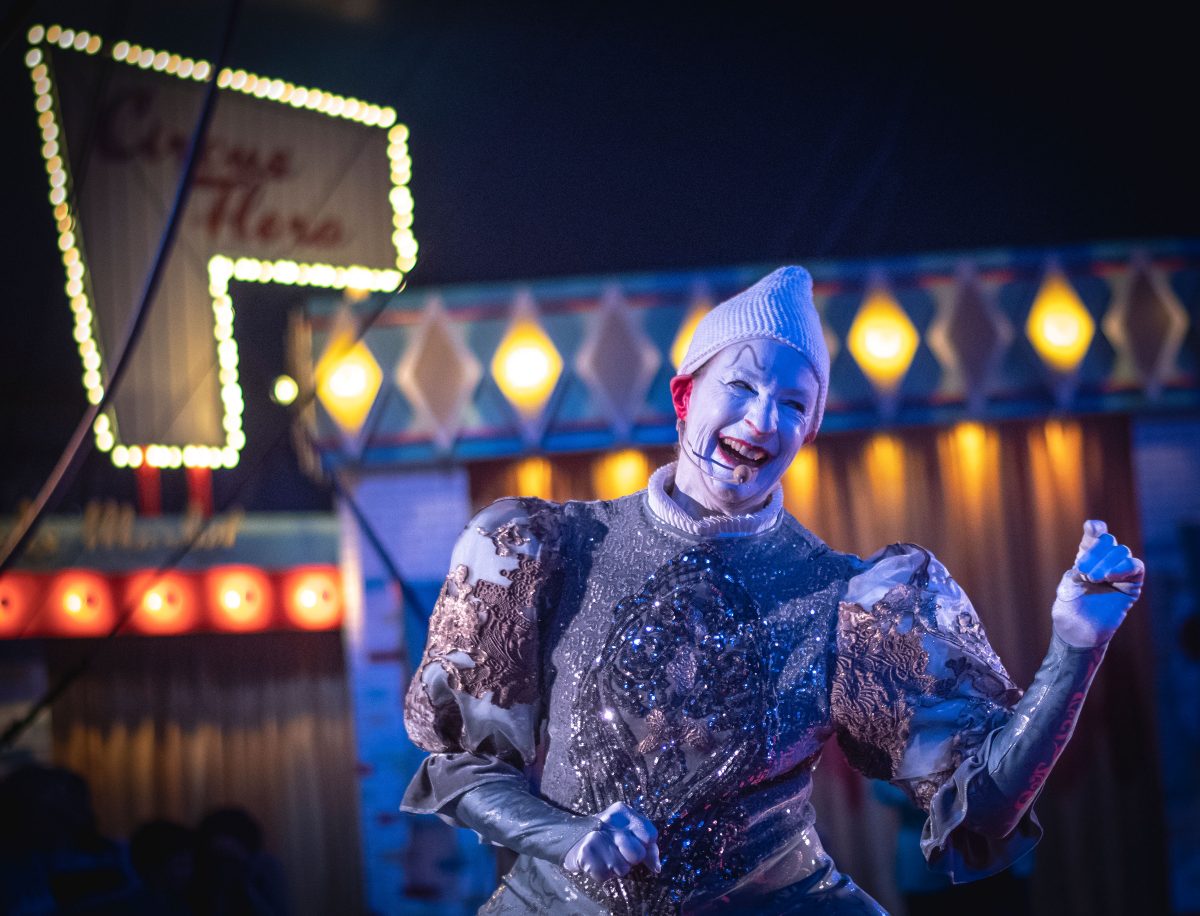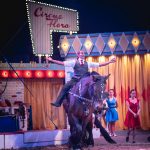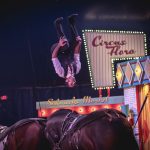
After nearly 35 years in St. Louis, Circus Flora has a home.
By Jen Roberts
Step right up and prepare to be whisked away to a magical world where people fly through the air, pigs dance, and one brave soul runs and jumps rope on a spinning wheel.
Artistic director Jack Marsh has been part of the wonder since nearly the beginning when his mother worked as a performer and a director. He was 2-years-old when the show debuted in 1986 at the Spoleto Festival in Charleston, South Carolina. Marsh never intended for it to be his life’s work, but he was drawn back after law school and several years as a corporate attorney. “Just the magic of it,” he says, “the love for it.”
The one-ring circus was named after an elephant that circus founder David Balding rescued after ivory poachers killed her mother in Botswana. (Flora was an integral part of the circus until the early 2000s, when she retired to an elephant sanctuary in Tennessee.) Balding’s idea: to meld modern theatre with a traditional European circus. “It was Balding’s dream to marry his twin loves of theatre and the traditional one-ring circus,” says Marsh.
It’s a circus with a storyline. “Circus typically has very specific images associated with it,” says Marsh. “Some of them are wonderful, like the magic of going as a kid and being transported into this place with beautiful people who are doing these incredible things. That is part of that imagery that we love and embrace.”
But not all circus imagery is so favorable. “There are not-so-positive images, like mistreated animals or tawdy aesthetics and a not thought-out artistic product. We steer clear of those,” says Marsh. “I think we lean into the fact that we are this very nostalgic art form, but we try to find ways where it can appeal to a modern audience.”
Circus Flora is modern, but it still has that traditional appeal that you enjoyed as a child. Inside The Big Top is a sawdust-filled ring that’s reimagined throughout the show. There are acrobats and high-wire artists, “the images you might come to expect,” says Marsh, “but then we wrap it in a fun and goofy atmosphere.”
It’s a show that appeals to everyone. “I think it’s secretly the best friend night out or date night. It’s not a show aimed at 5-year-olds; it’s just as fun for adults,” says Marsh. “That’s the beauty of it: You get all these people from different ages and backgrounds, and they’re going to have the same fun time for the same reason. It’s an amazing popular entertainment that not a lot of art forms can accomplish.”
And the show is local. Typically, the word “circus” conjures memories of traveling shows that arrive in town with lions and elephants and exciting performers. The big tent is set up and taken down nearly as quickly, as the show heads to its next city. Circus Flora is working hard to combat this transient image. “It’s been a while since we’ve played anywhere else, and we have year-round programming,” says Marsh. “We see ourselves as a vital part of the St. Louis fabric.”
For years, Circus Flora used to “squat on the Powell Hall parking lot every summer,” recalls Marsh, adding that the temporary location wasn’t as conducive to establishing the circus as a St. Louis arts institution. The schedule also had to coincide with the symphony’s, and the circus packed up everything after the show concluded each year.
Then, in 2018 the Kranzberg Arts Foundation stepped in. The nonprofit provided a permanent venue, simply called The Big Top, at 3401 Washington Ave. After years of setting up on the parking lot beside Powell Hall, Circus Flora now has its own space, and the tent remains up for much of the year. Even when it’s not set up during the winter months, the four posts remain and a permanent neon-lit sign points in the direction of The Big Top. As Marsh says, “Our best billboard is our big red tent.”
Marsh hopes this permanent location will enable Circus Flora to help grow Grand Center Arts District while allowing the circus to be “full members of the community,” he says. “We like to stress the St. Louis-ness of what we do and how important the community is to us.”
Clowns on Call is one way that Circus Flora extends the show throughout the year and beyond The Big Top. Through this cornerstone community outreach program, clowns entertain children at SSM Health Cardinal Glennon Children’s Hospital. “It’s healing through laughter,” says Marsh. “The families are going through what I am sure is the toughest experience in their life, and it’s really wonderful to be able to transport them and bring a little bit of the magic to them.”
Circus Flora also provides tickets to underserved communities, so all kids can be part of the experience. “The community-oriented mission is really important to us,” says Marsh.
Marsh admits there are a lot of “unmagical things” that go into planning and executing a show including physical labor, paperwork, and budgeting. But even after all these years, he still gets that “warm, excited feeling in his chest” when he sees the audience’s reaction to a performance. “Being able to trace that moment back through a mountain of hard work from so many talented people is amazing,” says Marsh.
Each year, Circus Flora presents a new theme. This year’s production taking place June 4th through 28th is “The Trial of the Century,” which is best described as a “boisterous courtroom crossed with a circus,” says Marsh, which is sure to bring him back to his days as a lawyer. It’s also sure to tie in elements of St. Louis. After all, Circus Flora is St. Louis’ circus — and it’s not going anywhere.










